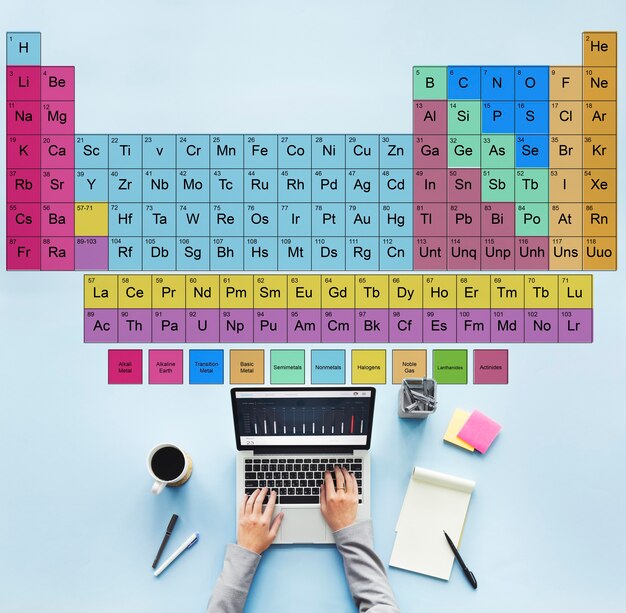Fascinating Facts about the Periodic Table

The periodic table is like a roadmap for the building blocks of our universe.
Each element in the periodic table has its own unique atomic number.
The periodic table is arranged in order of increasing atomic number.
Mendeleev is often credited as the father of the modern periodic table.
There are currently 118 known elements on the periodic table.
Hydrogen is the lightest and most abundant element in the universe.
The majority of elements on the periodic table are metals.
Carbon is the basis of organic chemistry and the building block of life.
Noble gases are known for their low reactivity and stable electron configurations.
The lanthanides and actinides are often referred to as the rare earth elements.
Elements in the same group of the periodic table have similar chemical properties.
The periodic table is divided into several blocks: s, p, d, and f.
Dmitri Mendeleev predicted the existence of several elements before they were discovered.
Elements in the same period have similar energy levels in their electron shells.
The actinides are all radioactive elements.
The halogens are highly reactive nonmetals.
Transition metals are known for their variable oxidation states.
The atomic mass of an element on the periodic table represents the average mass of its isotopes.
Elements in the f-block of the periodic table are often used in the production of magnets.
Fascinating Facts about the Periodic Table part 2
The periodic table is used to understand chemical reactions and predict element properties.
The rarest naturally occurring element on Earth is astatine.
The periodic table provides a classification system for elements based on their properties.
Hydrogen can exist as both a gas and a liquid under normal conditions.
Elements in the same group often have similar valence electron configurations.
The periodic table helps scientists understand the arrangement and behavior of atoms.
Uranium is the heaviest naturally occurring element on Earth.
Elements in the d-block of the periodic table are known as transition metals.
The periodic table is constantly expanding as new elements are discovered.
Elements in the same group tend to have similar chemical behaviors and reactivity.
The discovery of new elements often involves nuclear reactions and particle accelerators.
The periodic table is an essential tool for chemists and researchers in many fields.
Elements in the p-block of the periodic table include both metals and nonmetals.
The noble gases have full valence electron shells, making them stable and unreactive.
Elements in the s-block of the periodic table include the alkali and alkaline earth metals.
Many elements on the periodic table have multiple isotopes with different atomic masses.
The rare earth elements are essential for many modern technologies, including smartphones and wind turbines.
Elements in the f-block of the periodic table are known as inner transition metals.
The atomic number of an element represents the number of protons in its nucleus.
Elements in the same period generally exhibit similar trends in properties as you move across the table.
The lanthanides are often used in the production of lasers and other high-tech devices.
The periodic table has helped scientists discover and understand the properties of new materials.
Elements in the same group tend to have similar chemical reactions and bonding behaviors.
The periodic table provides a visual representation of the elements and their relationships.
Elements in the p-block of the periodic table include the halogens, which are highly reactive nonmetals.
The discovery and understanding of the periodic table have revolutionized our understanding of chemistry and the universe.